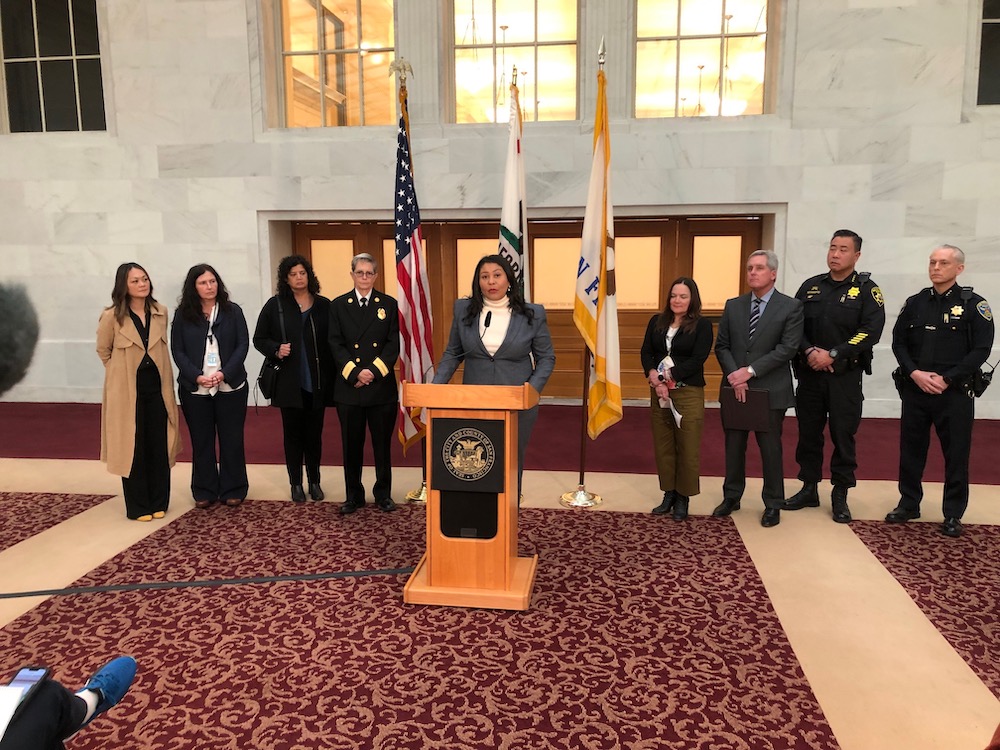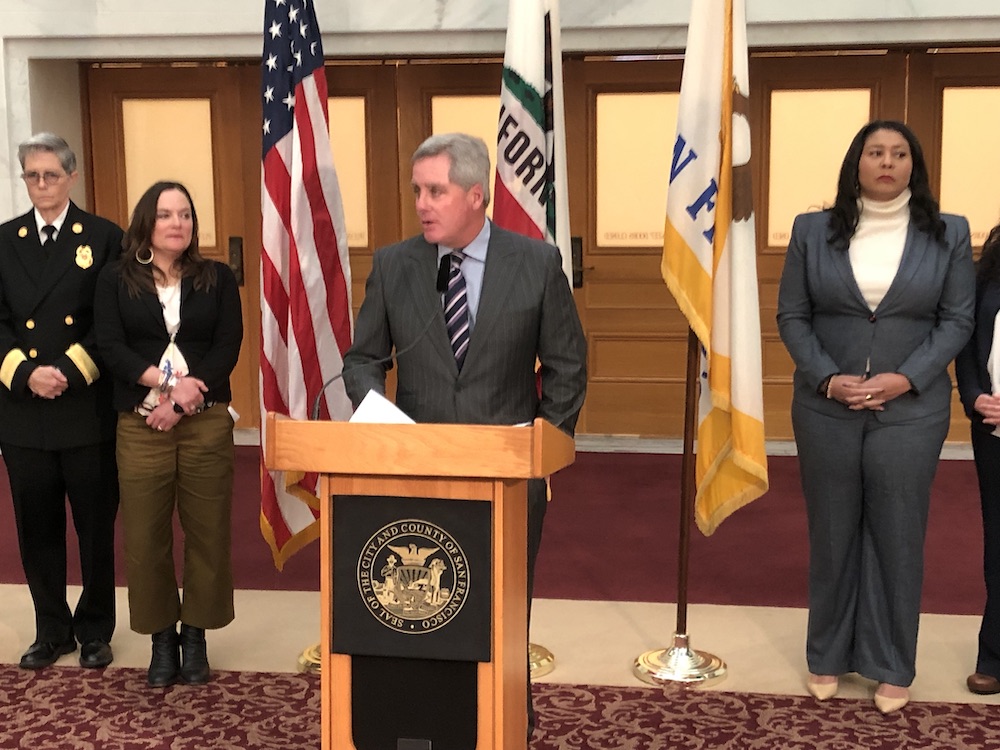Mayor London Breed and her emergency services team advised us today that the city will be well prepared for Wednesday’s storm and blamed the National Weather Service for the failures of New Year’s Eve.
Breed and Mary Ellen Carroll, the city’s emergency services director, said they were caught by surprise Dec. 31 because the NWS had predicted far lower levels of rainfall, only an inch or two, for San Francisco.

By late morning, though, it was clear that the flooding was going to be serious, and the city “activated the Emergency Operations Center,” Carroll said. That wasn’t quickly enough to avoid cars stuck in intersections and on freeways that weren’t closed or for businesses or residents to put up sandbags and protect themselves from inundation.
Tomorrow, she said, the big issue may be not just rain but winds gusting as high as 60 to 70 miles an hour, which will mean trees falling over and power lines going down.
You can text your zip code to 888777 to get live alerts.
I asked Carroll if she was confident that PG&E would be able to restore power quickly. She was polite, and said that the city had been in contact with PG&E—but it was pretty clear from her response that she, like other city officials, is not all the confident in the private utility, which has shown very little interest in working with the city.
Breed repeatedly said that the New Year’s Eve flooding was “unprecedented.”

Dennis Herrera, the head of the Public Utilities Commission, was the only city official to raise what seems to me to be the biggest issue here: What happens if this is the new normal?
“This is going to be all the more common with climate change,” Herrera said.
He talked about $600 million in city infrastructure upgrades to avoid future flooding at the Folsom and 17th are, at Wawona and 15th, and along Alemany, but that’s just a small part of the picture. He also talked about new developments including green infrastructure; at this point, he said, those improvements could divert 232 million gallons of potential flood water.
I asked him after the press conference it that’s enough; won’t the city have to consider changing building codes and development patterns, potentially in a pretty profound way, it this level of flooding becomes an annual event?
“We have to look at everything,” he said.
So what about the thousands of unhoused people trying to survive on the streets? Rain alone is a problem, even if people have tents. Most of the inexpensive tents that homeless people can afford aren’t perfectly waterproof, and that’s assuming that the sidewalks and streets aren’t turning into rivers.
It’s a huge humanitarian crisis, and here’s what Shireen McSpadden, Breed’s director of the Office of Homelessness and Supportive Housing told us:
The city is going to “repurpose” some shelter beds. The rules will change so that unhoused people can walk into a shelter and seek space, if it’s available. “We had 170 vacant beds this morning,” McSpadden said.
By any reasonable estimate, there are thousands of people living on the streets right now. And in an emergency, the city has 170 beds, for people who can get there in time and qualify.
I don’t think I am the only one who finds that so deeply unacceptable.




